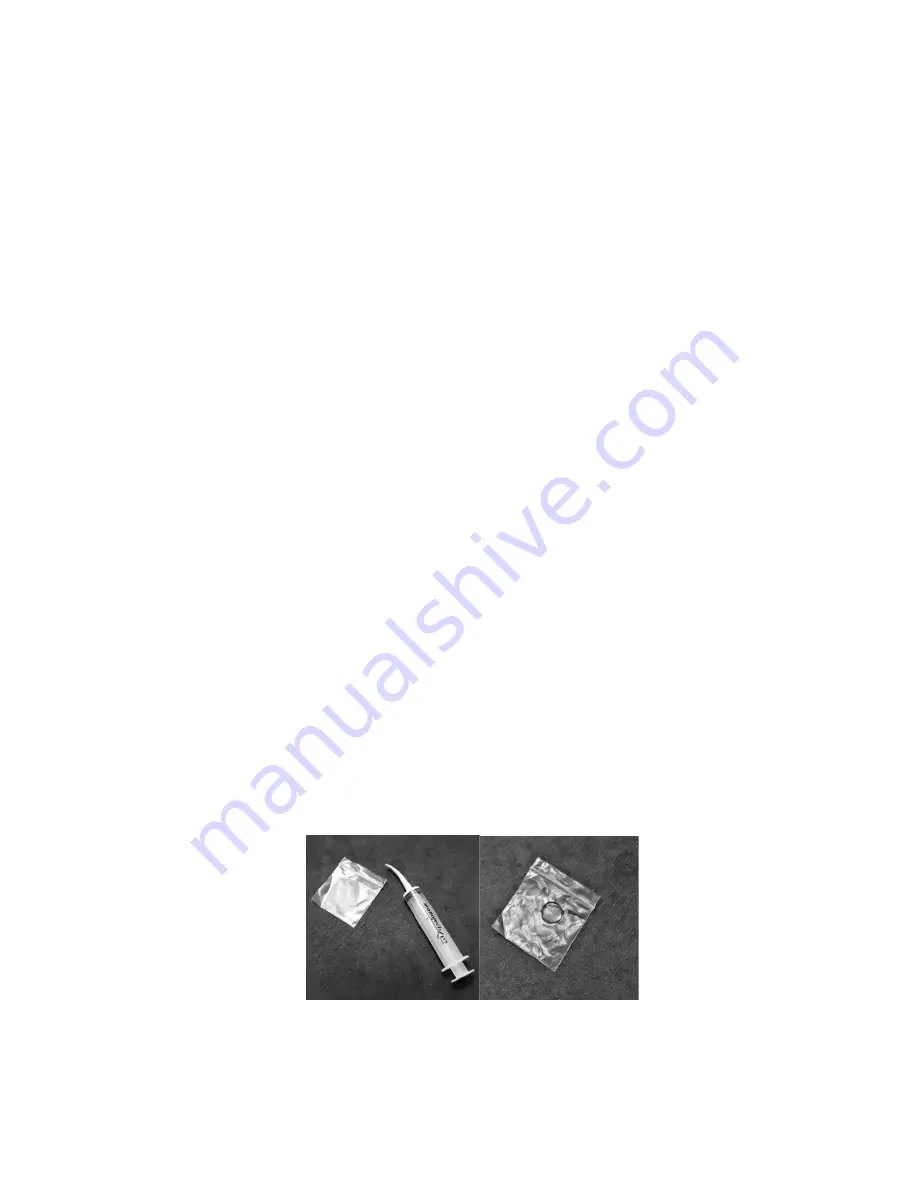
Inspection After Cleaning
(21) Before assembling the regulator, it is necessary to inspect all of the cleaned components. Using the
magnifying glass, check the components for damage that may have been hidden by corrosion or lubricant.
Look for scratches that may affect the sealing of the regulator. In a darkened room, use the UV light to look
for organic material. If any are present, reclean the part! This is critical for use with oxygen percentages
above 50%!
(22) Another way to check for residual lubricants is to fill a tray with clean, fresh, water deep enough to cover
the parts by an inch or so. Lay the components in and circulate the water. Allow the pieces to soak for several
minutes. Once it has settled, look for a rainbow sheen on the surface of the water. Any residual lubricants
will float and form a “slick” on the surface. If one is present, the parts must be cleaned again.
(23) Now that all parts have been cleaned and checked, the assembly can begin. Make sure all old parts that
are to be replaced have been discarded or segregated. Remove the new parts from the service kit bag and
lay them out in the order they will be used. Do not take the new parts out of the bags yet!
Caution Note:
Removing parts from their individual bags, before they are to be used, runs the risk of
mixing them up. Some orings are very close in size but are not interchangeable! Keep
the parts in the bags until you actually need them.
(24) As with the parts that have been cleaned, it is a good idea to inspect the new parts as well. Especially
the HP seat. Make sure it is free of any defects. Check all of the orings and inspect them as you use them for
nicks or other concerns. Inspect the washers to ensure they are free of excess burrs or other concerns that
could affect their function. It is also a good idea to use the parts list on the schematic to ensure that all of the
new parts that are needed are present and accounted for in their required quantities.
(25)
Lubrication of Orings;
Lubrication can be overdone. Doing so runs the risk of trapping excess dirt or
debris on the parts. One way of reducing the risk of overdoing it is to use the lubeinabag method. This
involves using a small clean plastic bag and putting a small amount of lube in it. Then the oring is inserted
into the bag, worked around, excess squeezed off, and taken out of the bag, and used in its location.
Fig. 1 Fig. 2.
(26) Another way is to apply a small amount of Tribolube to the gloved index finger and massage the oring
between the thumb and index finger. Either way works, but the bag method tends to give better distribution
results and uses less lubricant.




















